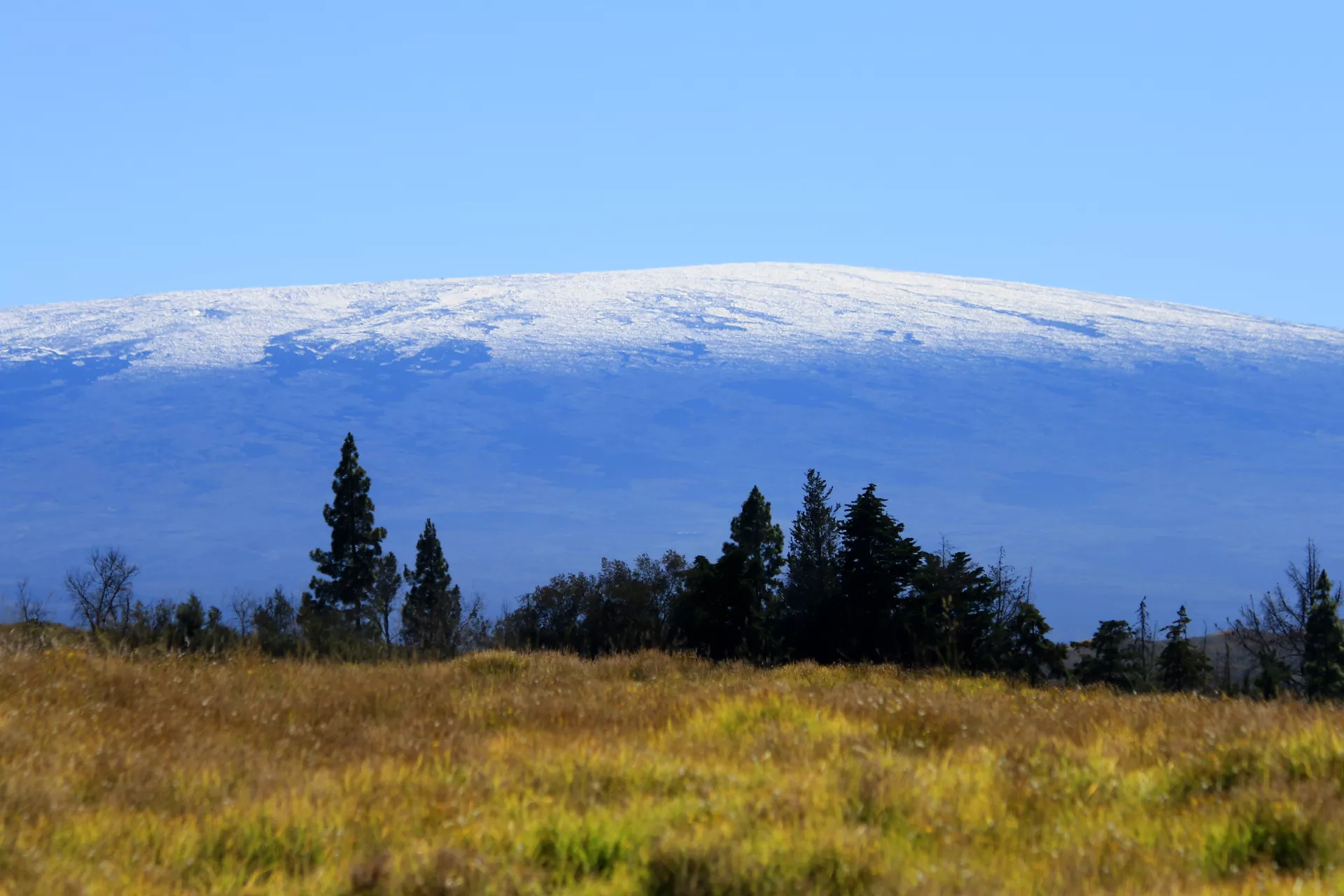
 Maunaloa
Maunaloa
Maunaloa
What: The largest active volcano in the world, encompassing half of the Island of Hawaiʻi
Where: 37 miles southwest of Hilo, in Hawaiʻi Volcanoes National Park
It’s no mystery why early Hawaiians gave this massive shield volcano the name Maunaloa, or “long mountain.” One of two volcanoes that make up Hawaiʻi Volcanoes National Park, Maunaloa rises more than 13,000 feet above sea level and extends another 42,000 feet beneath the ocean and seafloor. In fact, Maunaloa is so huge that it forms half of the landmass of the Island of Hawaiʻi – an area nearly large enough to fit all the other Hawaiian islands combined!
Maunaloa has erupted 33 times since 1843, making it one of the most active volcanoes on the planet. The sleeping giant last erupted in 1984, when lava flows came within five miles of the town of Hilo. Scientists monitor Maunaloa 24/7 for seismic activity, releases of volcanic gas and other signs of unrest deep within its dome-like mass.
Though less accessible than its neighbor, Kīlauea, Maunaloa’s summit can be reached on foot via backcountry hike. These hikes should only be attempted by experienced hikers in good physical shape, as the high altitude, harsh climate and challenging terrain make the trek extremely difficult – and dangerous. Backcountry camping is permitted at Maunaloa, and there are two cabins where through-hikers can bunk for up to three nights. Hikers must obtain a permit before hiking or camping on the volcano. For current weather information, park closures and safety precautions, check the NPS Hawaiʻi Volcanoes National Park page before your visit.
An easier way to experience Maunaloa is to drive the spectacular Kaʻū Scenic Byway, which extends from Kona to the southernmost tip of the island of Hawaiʻi and meanders around the base of Maunaloa through sections of Hawaiʻi Volcanoes National Park. Or, get a bird’s eye view of this and other Hawaiʻi Island volcanoes on a helicopter or airplane tour with one of our local guides.
Where: 37 miles southwest of Hilo, in Hawaiʻi Volcanoes National Park
It’s no mystery why early Hawaiians gave this massive shield volcano the name Maunaloa, or “long mountain.” One of two volcanoes that make up Hawaiʻi Volcanoes National Park, Maunaloa rises more than 13,000 feet above sea level and extends another 42,000 feet beneath the ocean and seafloor. In fact, Maunaloa is so huge that it forms half of the landmass of the Island of Hawaiʻi – an area nearly large enough to fit all the other Hawaiian islands combined!
Maunaloa has erupted 33 times since 1843, making it one of the most active volcanoes on the planet. The sleeping giant last erupted in 1984, when lava flows came within five miles of the town of Hilo. Scientists monitor Maunaloa 24/7 for seismic activity, releases of volcanic gas and other signs of unrest deep within its dome-like mass.
Though less accessible than its neighbor, Kīlauea, Maunaloa’s summit can be reached on foot via backcountry hike. These hikes should only be attempted by experienced hikers in good physical shape, as the high altitude, harsh climate and challenging terrain make the trek extremely difficult – and dangerous. Backcountry camping is permitted at Maunaloa, and there are two cabins where through-hikers can bunk for up to three nights. Hikers must obtain a permit before hiking or camping on the volcano. For current weather information, park closures and safety precautions, check the NPS Hawaiʻi Volcanoes National Park page before your visit.
An easier way to experience Maunaloa is to drive the spectacular Kaʻū Scenic Byway, which extends from Kona to the southernmost tip of the island of Hawaiʻi and meanders around the base of Maunaloa through sections of Hawaiʻi Volcanoes National Park. Or, get a bird’s eye view of this and other Hawaiʻi Island volcanoes on a helicopter or airplane tour with one of our local guides.

